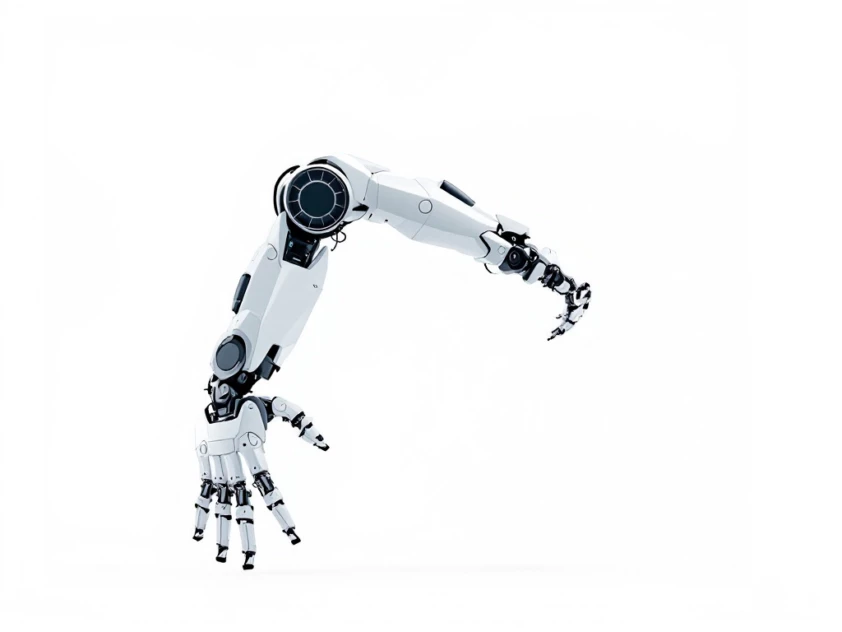Imagine a world where robots can think, learn, and make decisions independently. This isn’t science fiction anymore—it’s the cutting-edge field of AI agents in robotics. By combining artificial intelligence with robotics, we’re creating machines that can navigate complex environments, perform intricate tasks, and work alongside humans with unprecedented capabilities.
AI agents are the brains behind these robotic marvels. They are sophisticated software systems enabling robots to perceive their surroundings, process information, and take autonomous actions. Unlike traditional programmed robots that follow rigid instructions, AI-powered robots can adapt to new situations and improve their performance over time.
What can these AI agents do? Here are a few key capabilities:
- Perceive the environment through sensors and cameras
- Process and understand complex data in real-time
- Make decisions based on learned knowledge and current conditions
- Control robotic movements with precision
- Learn from experience to enhance future performance
The impact of AI agents in robotics is already being felt across industries. In manufacturing, they enable more flexible and efficient production lines. In healthcare, they assist in complex surgeries and patient care. And in logistics, they are revolutionizing warehouse operations and delivery systems.
We will explore the core technologies powering AI agents, examine real-world applications, and consider the future possibilities and challenges of this rapidly evolving field. Discover how AI agents are reshaping the world of robotics and pushing the boundaries of what machines can do.
Understanding the Fundamentals of AI Agents
AI agents are sophisticated systems that operate autonomously to achieve specific goals. These digital entities are designed to perceive their environment, process information, and take action—all without constant human oversight. But what exactly sets AI agents apart from other software?
At their core, AI agents possess several key characteristics that define their capabilities:
Autonomy: Unlike traditional programs that require step-by-step instructions, AI agents can operate independently. They make decisions and take actions based on their programming and learned experiences, adapting to new situations as they arise.
Perception: AI agents use sensors or data inputs to gather information about their surroundings. This could be visual data from cameras, audio from microphones, or even digital data streams. By constantly monitoring their environment, agents can respond to changes in real-time.
Decision-making: Once an AI agent perceives its environment, it must decide how to act. This process involves analyzing data, evaluating potential outcomes, and choosing the best course of action to achieve its goals. Advanced agents use complex algorithms and machine learning models to make these decisions.
Learning: Perhaps the most fascinating aspect of AI agents is their ability to learn and improve over time. Through techniques like supervised learning and reinforcement learning, agents can refine their decision-making processes, becoming more effective with each interaction.
The true power of AI agents lies in how these characteristics work together. An autonomous vehicle, for example, uses cameras and sensors to perceive road conditions, makes split-second decisions to navigate safely, and learns from each journey to improve its performance. As AI technology advances, we see agents with increasingly sophisticated neural networks that can handle complex tasks across various domains. From virtual assistants that understand natural language to robotic systems that navigate physical spaces, AI agents are transforming how we interact with technology.
Understanding these fundamentals is crucial as AI agents become more prevalent in our daily lives. They are not just tools but intelligent systems that can adapt, learn, and make decisions—sometimes in ways that surpass human capabilities. As we continue to develop and deploy these agents, it is important to consider both their potential and the ethical implications of creating increasingly autonomous systems.
Advancements in AI-Powered Robotics
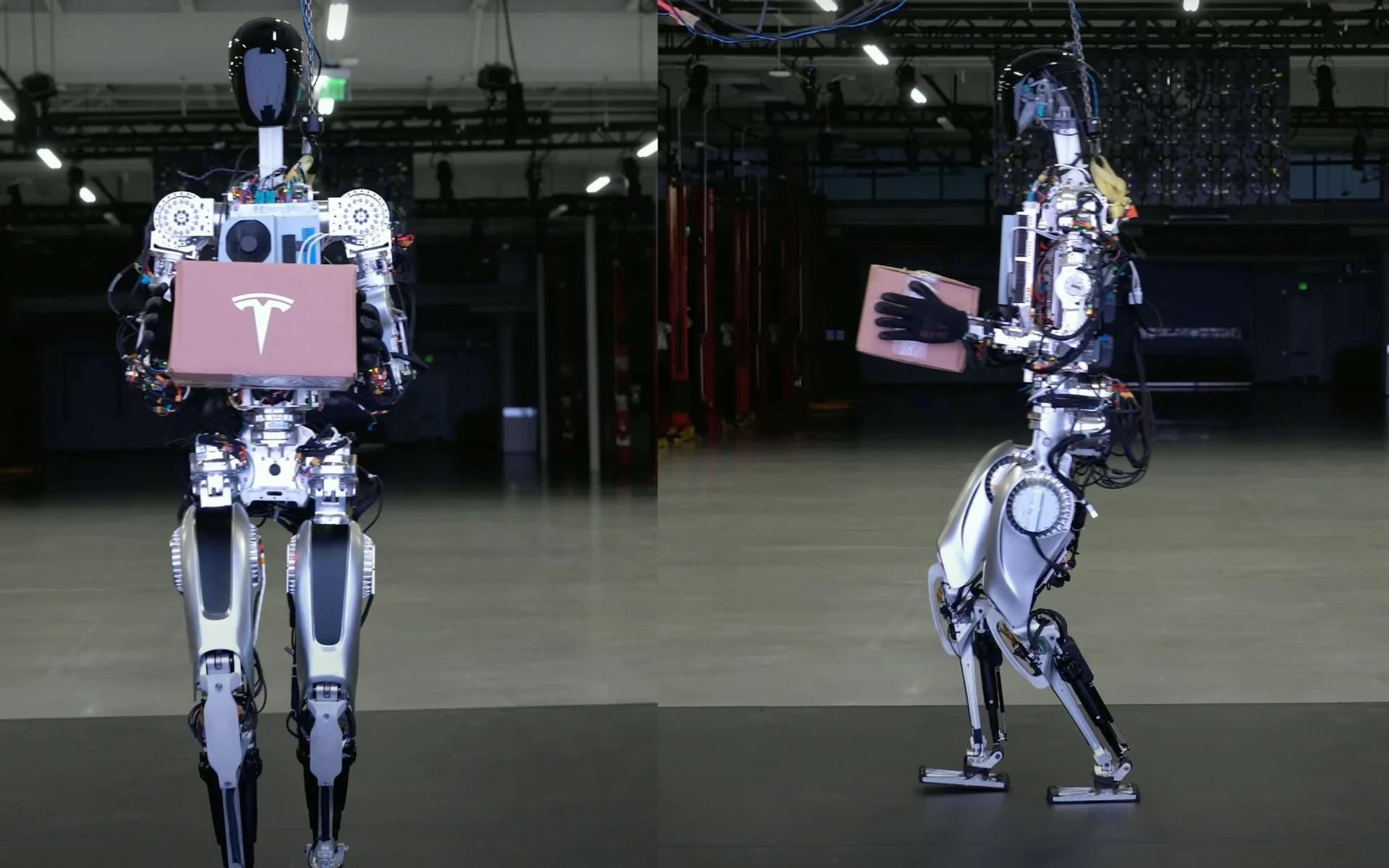
The fusion of artificial intelligence and robotics has ushered in a new era of autonomous machines capable of tackling increasingly complex tasks. Recent breakthroughs have dramatically enhanced robots’ ability to interpret their surroundings, make split-second decisions, and operate with minimal human oversight. These advancements are transforming industries and boosting operational efficiency across the board.
Whether it’s handling fragile objects in a hospital or adjusting grip in a warehouse, robots need real-time, closed-loop force and haptic feedback to behave with the fluidity and safety of human interaction.
– Hadas Shore, Marketing Director, VPG Micro-Measurements
In manufacturing, AI-powered robots are revolutionizing production lines. Gone are the days of rigid, preprogrammed automatons. Today’s smart robots adapt on the fly, optimizing their movements to maximize output while minimizing errors. At a BMW plant in Germany, collaborative robots work alongside human employees, handling heavy lifting and precise assembly tasks with superhuman accuracy. This human-robot teamwork has slashed production times and significantly reduced workplace injuries.
The healthcare sector has also seen remarkable improvements thanks to AI-enhanced robotics. Surgical robots like the da Vinci system now assist surgeons in performing intricate procedures with unparalleled precision. These robots translate a surgeon’s hand movements into micro-precise actions, filtering out natural hand tremors. The result? Faster recoveries, smaller incisions, and reduced complications for patients.
Perhaps most impressive are the leaps in robotic perception. Advanced computer vision algorithms allow robots to ‘see’ and interpret their environment in ways that rival and sometimes surpass human capabilities. In warehouse settings, companies like Amazon deploy fleets of autonomous mobile robots that navigate complex, dynamic spaces. These robots use AI to plan efficient routes, avoid obstacles, and even predict where human workers are likely to move next.
The decision-making prowess of AI-powered robots has also taken a quantum leap forward. Machine learning models trained on vast datasets enable robots to make nuanced choices in unpredictable scenarios. In quality control applications, for example, AI-driven inspection robots can spot defects invisible to the human eye, dramatically improving product consistency.
As these technologies continue to evolve, we’re moving closer to realizing the full potential of autonomous robotics. The future promises even more seamless integration of AI and robotics, with machines that can learn, reason, and collaborate in ways we’re only beginning to imagine. From smart factories to AI-assisted healthcare, the impact of these advancements will likely reshape entire industries in the years to come.
While our robots excel at repetitive tasks in controlled environments, they still need significant human oversight when dealing with real-world variability and contextual decision-making.
– John Cheng, CEO, PlayAbly.AI
Applications of AI Agents in Robotics
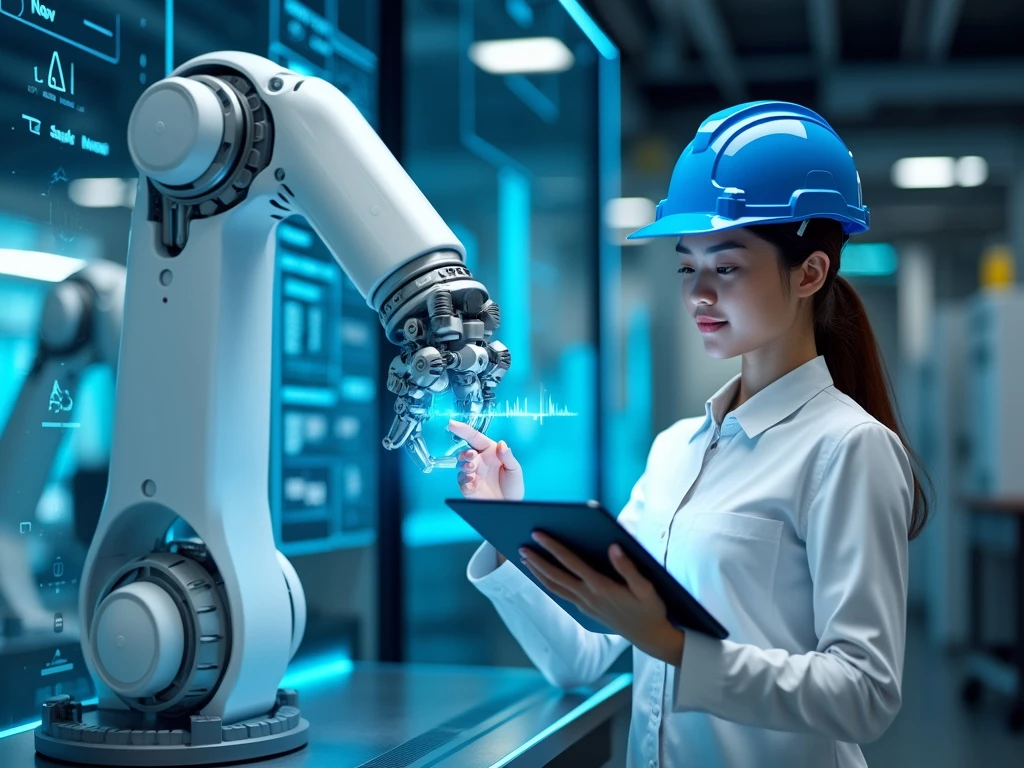
Engineer interacts with a robotic arm in a high-tech lab.
AI agents are enhancing the field of robotics, boosting capabilities and efficiency across various sectors. From industrial automation to healthcare and service robotics, these intelligent systems are transforming how machines interact with the world and assist humans. Here are some key applications of AI agents in robotics:
Industrial Automation
In manufacturing and industrial settings, AI-powered robots are taking on increasingly complex and adaptive roles:
- Collaborative robots or ‘cobots’ work alongside human employees, learning tasks through demonstration and adjusting their actions in real-time
- AI vision systems enable robots to identify defects, sort items, and handle variable products on assembly lines
- Predictive maintenance algorithms analyze sensor data to anticipate equipment failures before they occur, reducing downtime
For example, BMW is using AI-enhanced robots in its factories that can adapt to new tasks without reprogramming, increasing flexibility in production.
Healthcare Robotics
The healthcare sector is benefiting immensely from AI-driven robotic systems:
- Surgical robots like the da Vinci system provide surgeons with enhanced precision and control during minimally invasive procedures
- AI-powered diagnostic tools analyze medical images and patient data to assist in early disease detection
- Robotic exoskeletons utilize AI to help patients with mobility impairments regain movement
The Mayo Clinic has implemented an AI system that can predict and prevent cardiac arrests up to 6 hours in advance by continuously analyzing patient vital signs.
Service Robotics
AI agents are enhancing service robots to perform more sophisticated tasks:
- Personal assistant robots use natural language processing to interact with users and perform household chores
- Retail robots employ AI to navigate store floors, check inventory, and assist customers
- Hospitality robots leverage AI to deliver room service, provide concierge information, and even prepare drinks
Hilton Hotels has piloted an AI-powered robot concierge named ‘Connie’ that can answer guest questions and provide travel recommendations.
Exploration and Hazardous Environments
AI-enabled robots are venturing into areas too dangerous or difficult for humans:
- Mars rovers like Perseverance use AI for autonomous navigation and sample collection on the Red Planet
- Underwater robots employ machine learning algorithms to map the ocean floor and study marine ecosystems
- Disaster response robots utilize AI to search for survivors in collapsed buildings and assess structural damage
As AI continues to advance, more innovative applications of intelligent agents in robotics will emerge. These technologies are not just automating tasks, but augmenting human capabilities and pushing the boundaries of what’s possible in fields ranging from manufacturing to space exploration.
In our world, we’ve found that AI works best when it removes cognitive clutter: drafting, summarising, structuring. That frees people up to focus on judgement
– Hilan Berger, CEO, SmartenUp
Challenges and Limitations of AI Agents in Robotics
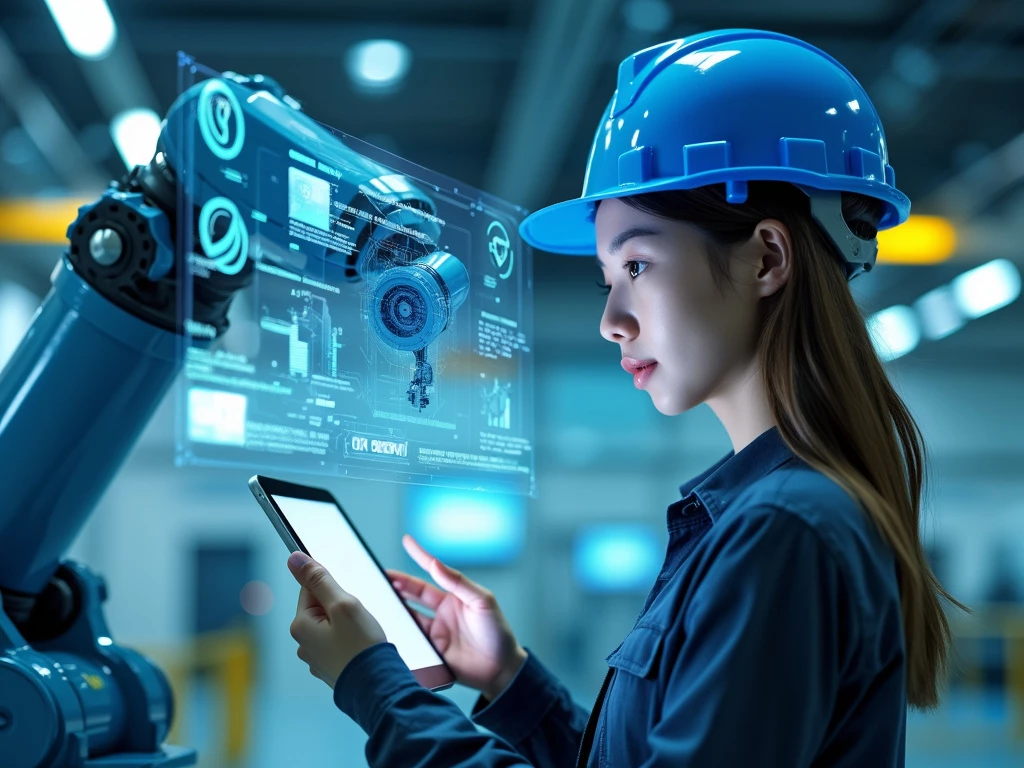
Engineer interacting with robotic arm and data interfaces.
AI agents promise significant advancements in robotics, but their integration faces considerable hurdles. From ethical dilemmas to technical constraints, achieving seamless AI-robotic synergy requires careful consideration.
Ethical Considerations: Navigating the Moral Maze
The deployment of AI agents in robotics raises profound ethical questions. Who bears responsibility when an AI-powered robot makes a mistake? How do we ensure these systems respect human values and rights? Consider autonomous vehicles. If faced with an unavoidable accident, how should the AI prioritize lives? These are real-world dilemmas that engineers and ethicists grapple with daily. Transparency in decision-making processes is crucial, yet the complexity of many AI systems makes this challenging. We must strive for explainable AI that allows humans to understand and audit robotic actions.
Many companies approach AI integration as a plug-and-play solution, dropping agents into workflows without fully preparing human teams, addressing psychological resistance, or setting ethical boundaries.
– Miriam Groom, CEO, Mindful Career inc., Mindful Career
Data Bias: The Hidden Threat to Fairness
AI agents learn from data, but what happens when that data is biased? The results can be disastrous, perpetuating and even amplifying societal prejudices. Facial recognition systems trained primarily on light-skinned faces have shown alarming inaccuracies when identifying people of color. In robotics, biased data could lead to machines that interact differently with various groups, reinforcing discrimination. Addressing this requires diverse, representative datasets and ongoing monitoring for fairness. It’s not just about data quality – it’s about ensuring equitable outcomes for all.
Transparency Issues: Peering into the Black Box
Many AI systems, particularly deep learning models, operate as ‘black boxes.’ Their decision-making processes are opaque, making it difficult to understand why they behave in certain ways. This lack of transparency poses significant challenges in robotics. How can we trust a robot if we can’t understand its reasoning? In critical applications like healthcare or security, this becomes a major concern. Efforts are underway to develop more interpretable AI models, but balancing performance with transparency remains a significant challenge.
Hardware Limitations: The Physical Frontier
AI agents may be virtual, but robots exist in the physical world. This introduces a host of challenges related to hardware capabilities and constraints. Processing power is a key limitation. Complex AI algorithms often require significant computational resources, which can be difficult to integrate into compact, mobile robotic platforms. Energy consumption is another critical factor. Sophisticated AI systems can drain power quickly, limiting the operational time of robotic systems. Balancing AI capabilities with energy efficiency is an ongoing challenge. Sensor limitations also play a role. The accuracy and reliability of AI agents in robotics depend heavily on the quality of sensory input they receive. Improving sensor technology is crucial for advancing AI-robotic integration.
The fusion of AI and robotics isn’t just a software problem – it’s a complex dance between algorithms and hardware, each pushing the boundaries of the other.
Real life isn’t labeled data—it’s messy, noisy, and full of edge cases that trip up even the smartest models.
– Justin Belmont, Founder & CEO, Prose
As we navigate these challenges, it’s clear that the path to truly intelligent, ethical, and reliable AI-powered robots is not straightforward. It requires ongoing collaboration between technologists, ethicists, policymakers, and society at large. Only by addressing these hurdles head-on can we unlock the full potential of AI agents in robotics while safeguarding our values and ensuring equitable benefits for all.
The Future of AI Agents in Robotics
AI agents are set to transform robotics in the coming years. The combination of 5G networks, edge computing, and advanced machine learning algorithms is opening up new possibilities. Here are some key trends shaping this field.
5G Integration: Real-Time Capabilities
The rollout of 5G networks is crucial for AI-powered robots. With ultra-low latency and fast data speeds, 5G enables robots to process information and make decisions in real-time. This is vital for applications like:
- Autonomous vehicles navigating busy city streets
- Surgical robots performing delicate procedures
- Drones delivering packages in complex urban environments
Haifa El Ashkar, director of strategy at CSG, explains: “5G’s lower latency and faster processing capabilities, coupled with edge architectures, have proven crucial for applications that require quick decision making and responsiveness.”
Edge Computing: Bringing AI Intelligence Closer
Edge computing moves AI processing power closer to robots themselves, rather than relying on distant cloud servers. This offers several benefits:
- Reduced latency for faster reactions
- Improved reliability, even with spotty network connections
- Enhanced privacy and security of sensitive data
Milind Kulkarni, VP at InterDigital’s Wireless Lab, highlights the importance: “To take advantage of the ultra-low latency that is one of the key benefits of 5G, edge computing plays a vital role by offering smaller amounts of storage and computation much closer to the device where it’s needed.”
Machine Learning Breakthroughs
Advancements in machine learning algorithms are making AI agents smarter and more adaptable. Key areas of development include:
- Reinforcement learning for improved decision-making
- Computer vision for better environmental awareness
- Natural language processing for seamless human-robot interaction
These innovations will enable robots to tackle increasingly complex tasks across various industries.
Future Predictions
Looking ahead, we can expect AI agents in robotics to become:
- More autonomous, requiring less human oversight
- Highly collaborative, working alongside humans seamlessly
- Increasingly versatile, adapting to new tasks and environments
While challenges remain, the future of AI agents in robotics is undeniably bright. As these technologies mature, we’ll see robots taking on more sophisticated roles in manufacturing, healthcare, logistics, and beyond.
The combination of 5G, cloud, and edge computing is crucial for empowering immersive experiences on new devices in more places and the development of connected ecosystems such as the metaverse.
– – Milind Kulkarni, VP and Head of InterDigital’s Wireless Lab
As AI agents become more advanced, they’ll transform industries and open up new possibilities we can scarcely imagine today. The future of robotics is an exciting frontier, driven by the powerful convergence of AI, 5G, and edge computing technologies.
Embracing the Future: AI Agents Revolutionizing Robotics
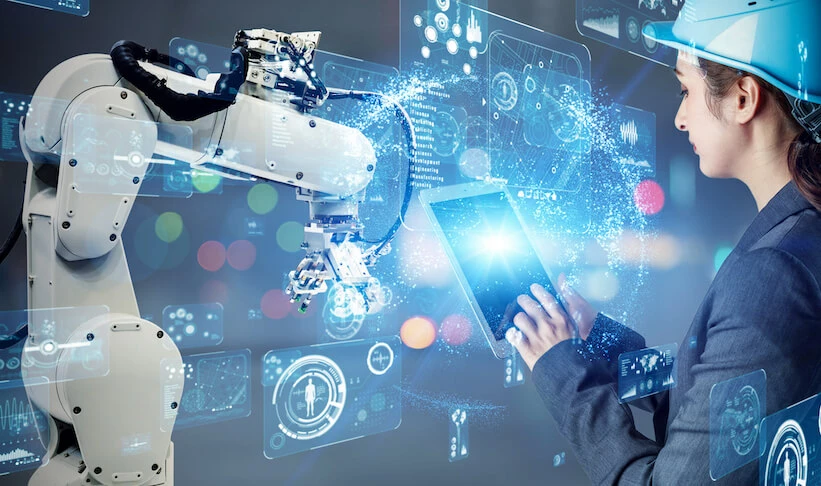
Robotic arm and woman work together with technology. – Via sandiego.edu
AI agents are transforming robotics, redefining what’s possible in the field. These intelligent entities are ushering in an era of unprecedented efficiency, autonomy, and adaptability in robotic systems. From warehouse automation to precision farming, AI agents are proving their worth across diverse applications, pushing the boundaries of what machines can achieve.
The integration of AI agents in robotics represents a paradigm shift. Robots are no longer limited to pre-programmed routines; they can now perceive, learn, and adapt to their environments in real-time. This leap forward opens up exciting possibilities for industries ranging from healthcare to manufacturing, promising enhanced productivity and innovation.
For developers and technical leaders looking to harness these advancements, platforms like SmythOS are paving the way. By offering intuitive tools for creating and deploying AI agents, SmythOS is democratizing access to this cutting-edge technology. The platform’s visual development environment and chat-based agent creation capabilities are reducing the barriers to entry, allowing even those without specialized AI expertise to build sophisticated robotic systems.
However, it’s crucial to remember that the field of AI agents in robotics is still evolving. As with any emerging technology, challenges remain. Ethical considerations, safety protocols, and regulatory frameworks will need to keep pace with these rapid advancements. The coming years will likely see intense debate and collaboration as we navigate the implications of increasingly autonomous robotic systems.
AI agents are reshaping the landscape of robotics, offering tantalizing glimpses of a future where machines can think, learn, and adapt alongside us. It’s an exciting time for developers, researchers, and innovators to explore the potential of AI agents in robotics. The journey ahead promises to be as challenging as it is rewarding, with the potential to fundamentally change how we interact with and benefit from robotic technologies.
